Our theme for Inktober2017 was 【 Legendary Creatures】and here you find some creatures of Italian folklore

KRAMPUS
The Krampus symbolize the devils of hell that once terrorized villagers, robbing them of the necessary supplies for the winter season.
They are also called "The Shadow of Santa Claus".
Every year, in the countries of Austria, Germany and the Alpine Arc of Italy in early December, San Nicolò and the Krampus (devils) go about it together.
The Krampus symbolize the devils of hell that once terrorized villagers, robbing them of the necessary supplies for the winter season.
They are also called "The Shadow of Santa Claus".
Every year, in the countries of Austria, Germany and the Alpine Arc of Italy in early December, San Nicolò and the Krampus (devils) go about it together.
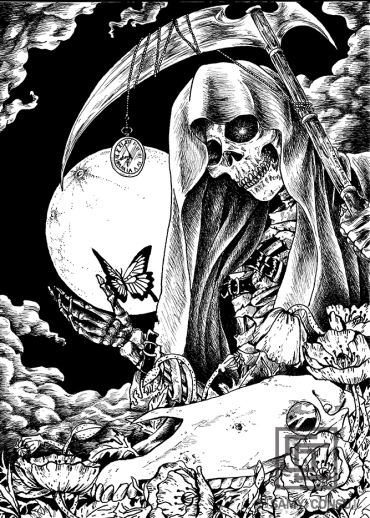
God of Death
We represented the Grim Reaper, with some of its most representative symbols.
The skull of the apocalypse horse and 'memento mori'.
The poppies symbols of the Greek god Thanatos (shared with brother Hypnos) for the sleepy properties of opium poppy.
The butterfly, in Greek "psyche", the soul that leaves the body after death in his hands.
The moon as a symbol of afterlife.
Lorology that always indicates the inevitable passage of time of life to death
We represented the Grim Reaper, with some of its most representative symbols.
The skull of the apocalypse horse and 'memento mori'.
The poppies symbols of the Greek god Thanatos (shared with brother Hypnos) for the sleepy properties of opium poppy.
The butterfly, in Greek "psyche", the soul that leaves the body after death in his hands.
The moon as a symbol of afterlife.
Lorology that always indicates the inevitable passage of time of life to death
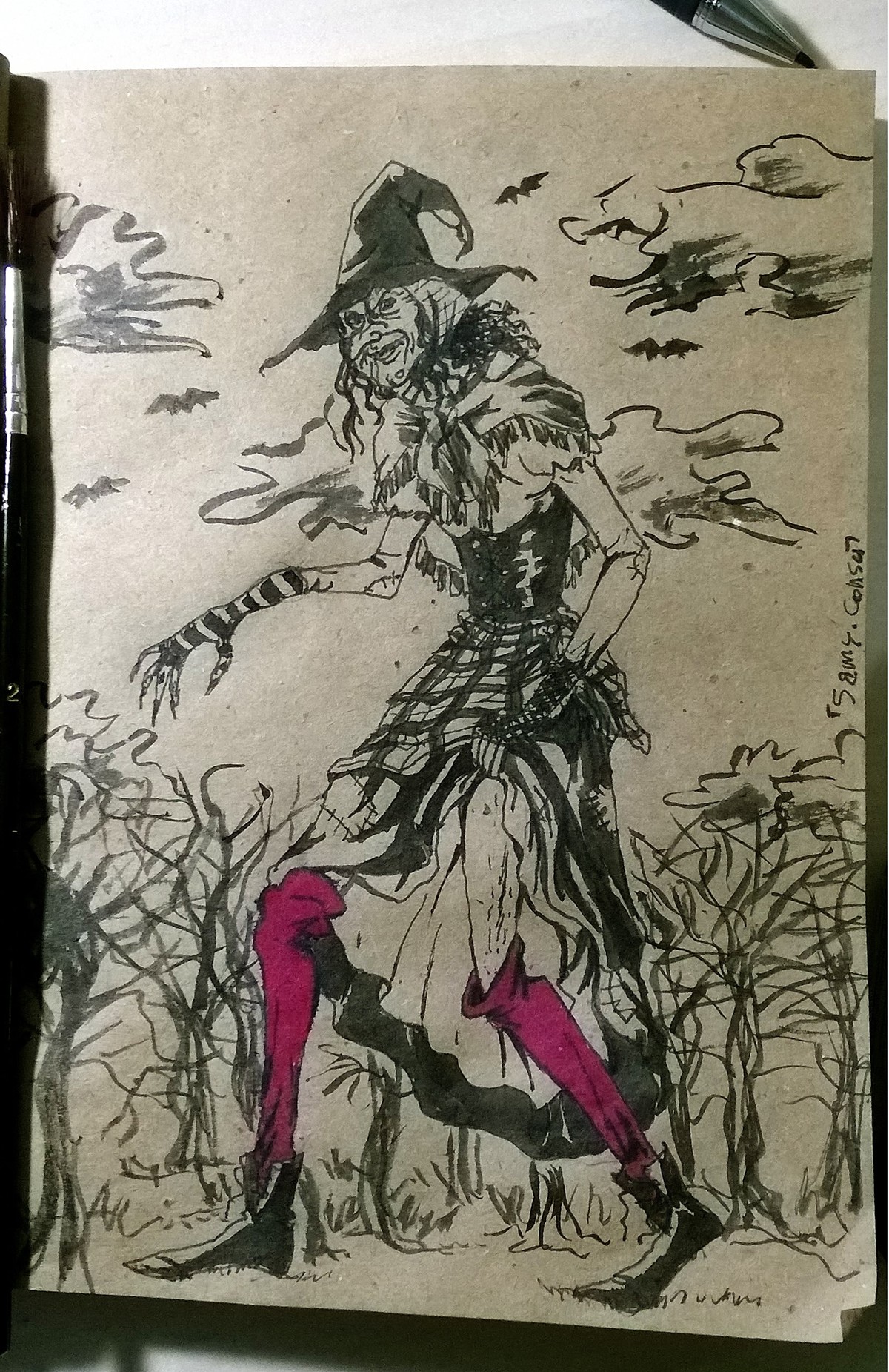
GIUBIANA
the popular witch of Northern Italy, between the regions of Piedmont and Lombardy.
The Giubiana is a witch, often lean, with very long legs and red socks.
The Giubiana is a witch, often lean, with very long legs and red socks.

AZZURRINA
Azzurrina is baby affected by albinism the protagonist of a popular medieval legend, set in the castle of Montebello di Torriana, in Romagna (Italy).
Because the popular superstition of the time linked albinism to events of a diabolical nature, the mother decided to periodically color her hair. But in the end the tint did not go well, giving her hair a blue reflection, like her eyes, so the nickname of "Azzurrina".
On June 21, 1375, she disappeared mysteriously in the castle while she was playing with a ball, and it is said that there was a storm outside which stopped immemately as she disappeared.
Her ghost seems to be still floating in the castle.
Azzurrina is baby affected by albinism the protagonist of a popular medieval legend, set in the castle of Montebello di Torriana, in Romagna (Italy).
Because the popular superstition of the time linked albinism to events of a diabolical nature, the mother decided to periodically color her hair. But in the end the tint did not go well, giving her hair a blue reflection, like her eyes, so the nickname of "Azzurrina".
On June 21, 1375, she disappeared mysteriously in the castle while she was playing with a ball, and it is said that there was a storm outside which stopped immemately as she disappeared.
Her ghost seems to be still floating in the castle.

ORCOLAT
Orcolat is a monstrous beast, similar to an ogre, which popular tradition indicates as the cause of earthquakes in Friuli (region in northern Italy). Orcolat is a recurring figure especially in folk tales. He would be locked up in the mountains of Carnia: every one of his agitation would abruptly cause an earthquake.
After 1976 it became synonymous with the earthquake that struck Friuli in that year.
When the earth shakes, the men saids "Ah ... again, the Orcolat woke up!" .
Orcolat is a monstrous beast, similar to an ogre, which popular tradition indicates as the cause of earthquakes in Friuli (region in northern Italy). Orcolat is a recurring figure especially in folk tales. He would be locked up in the mountains of Carnia: every one of his agitation would abruptly cause an earthquake.
After 1976 it became synonymous with the earthquake that struck Friuli in that year.
When the earth shakes, the men saids "Ah ... again, the Orcolat woke up!" .

ANGUANA
Our interpretation of Anguana.
Anguana is a creature tied to water, with features similar to those of a nymph and typical of alpine mythology.
They are often described as young women, often very attractive and able to seduce men; other times, however, appear instead as beings for half girls and half reptiles or fish, capable of launching strong shouts, or night shapes that always vanish before those who meet them can see their faces.
The other common point on which all legends agree is that the Anguans live at springs and streams and are water protectors, sometimes even fishermen. In other versions, they assume sinister traits. In different legends they are usually used to terrorize or fool the night travelers, disperse discord.
Our interpretation of Anguana.
Anguana is a creature tied to water, with features similar to those of a nymph and typical of alpine mythology.
They are often described as young women, often very attractive and able to seduce men; other times, however, appear instead as beings for half girls and half reptiles or fish, capable of launching strong shouts, or night shapes that always vanish before those who meet them can see their faces.
The other common point on which all legends agree is that the Anguans live at springs and streams and are water protectors, sometimes even fishermen. In other versions, they assume sinister traits. In different legends they are usually used to terrorize or fool the night travelers, disperse discord.
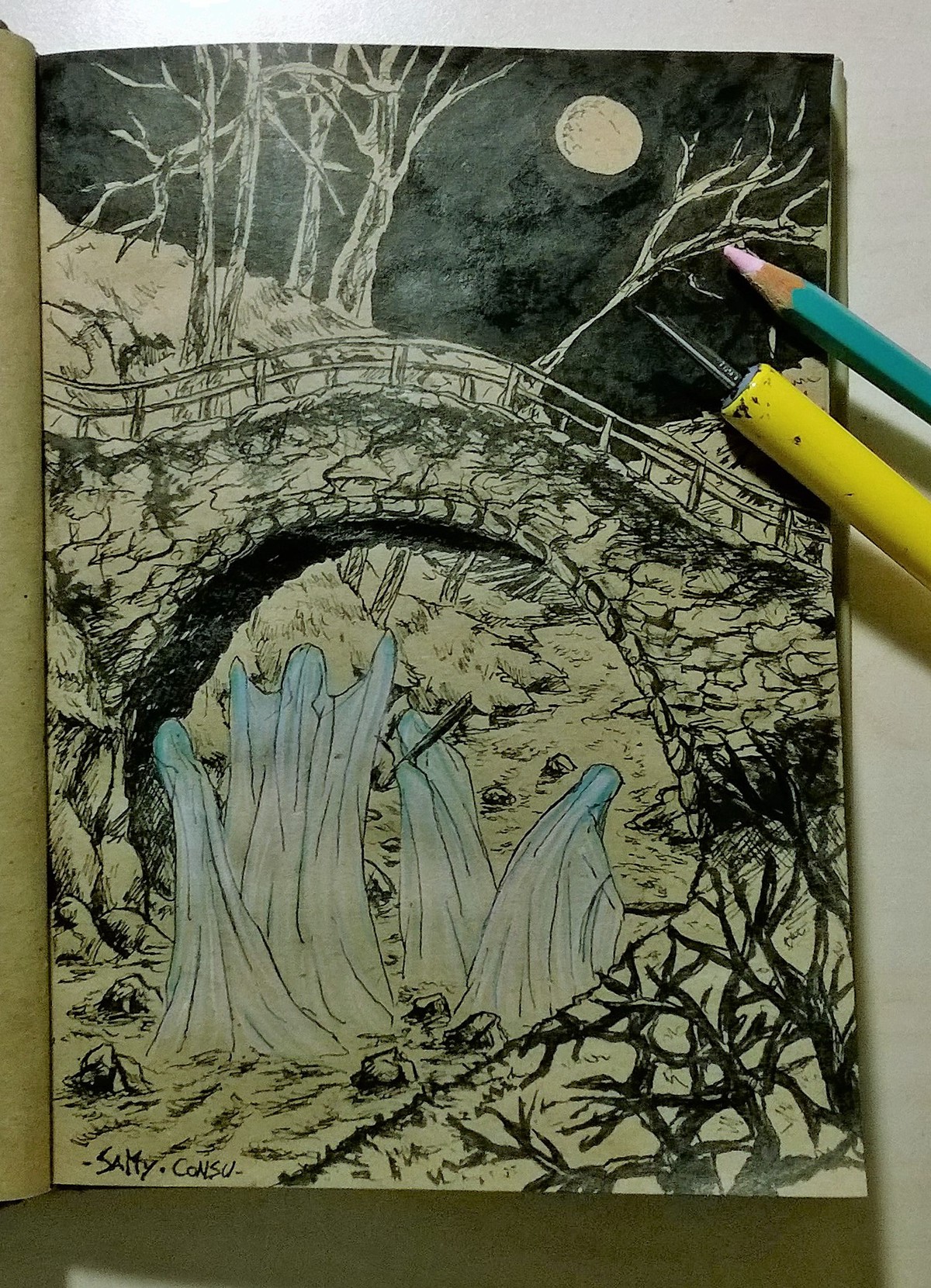
CONFINATI o ANIME CONFINATE
These ghosts are called Confinanti or Anime Confinate ( Confinished or Confined Soul), mythical figures of the popular tradition of the Lombardy region (Northern Italy).
The Confinants are dead who led a sinful life and are bound to remain confined to the wildest and most isolated places in the mountains.
They undergo the law of contrapposition and in these places they are forced to constantly strike the rocks with heavy iron bars. They can not be seen but can be heard.
They terrorize and throw stones to those who cross their places, can be avoided with the sign of the cross. They can be purified if they carry a stone or a sack of gold. There are so many different stories, it depends on the places.
These ghosts are called Confinanti or Anime Confinate ( Confinished or Confined Soul), mythical figures of the popular tradition of the Lombardy region (Northern Italy).
The Confinants are dead who led a sinful life and are bound to remain confined to the wildest and most isolated places in the mountains.
They undergo the law of contrapposition and in these places they are forced to constantly strike the rocks with heavy iron bars. They can not be seen but can be heard.
They terrorize and throw stones to those who cross their places, can be avoided with the sign of the cross. They can be purified if they carry a stone or a sack of gold. There are so many different stories, it depends on the places.
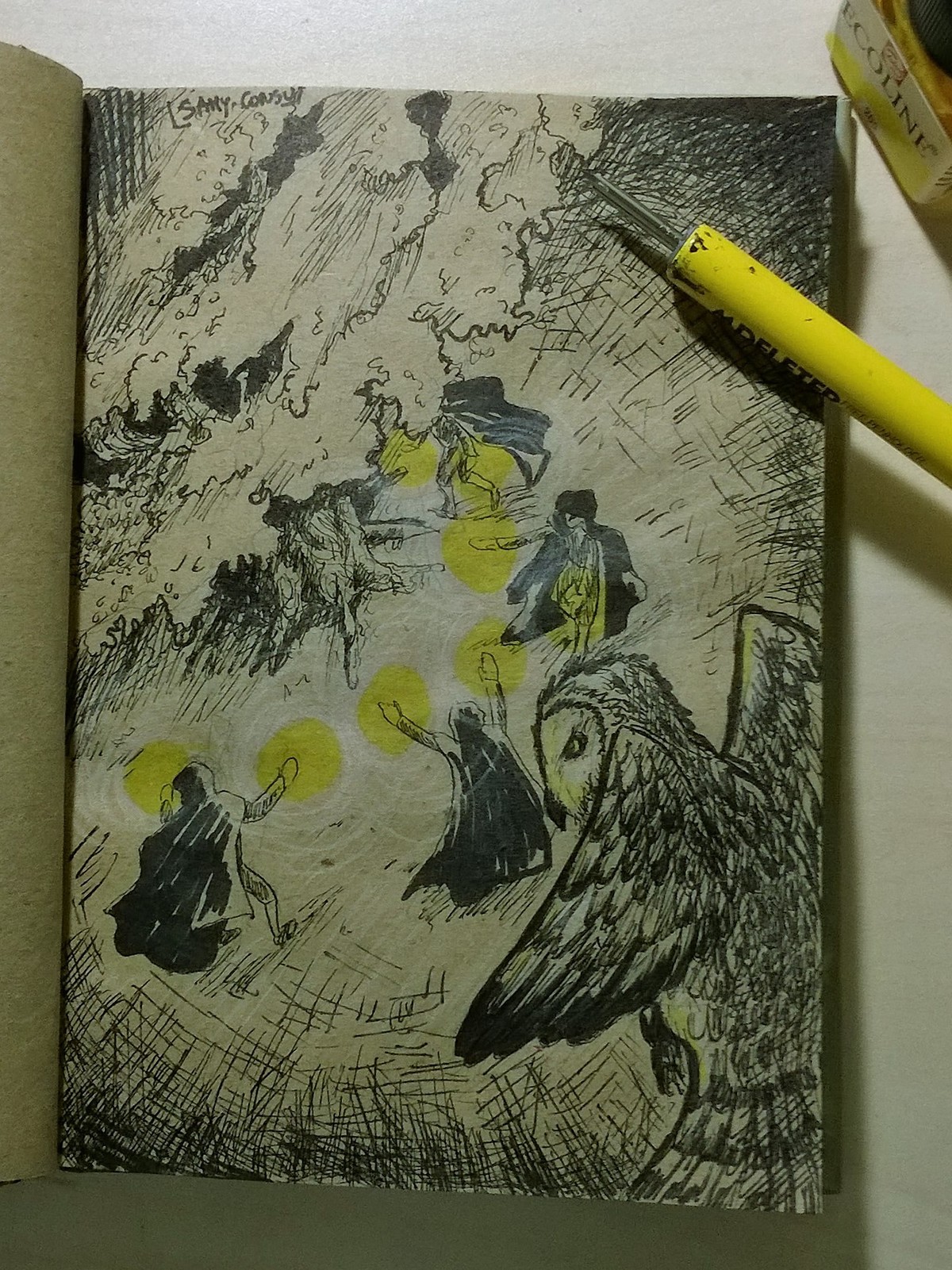
STREGO
The STREGO is a male character of the folk tradition of Garfagna (Tuscany, Central Region in Italy) and unlike the witches and sorcerers who are witchcraft and aim to hurt others, STREGO does not seem to be very interested in humans but prefer to gather in group to perform ceremonies devoted to the devil and the afterlife, it was said that he was capable of spells, spells, so that he could talk to the dead and make them come alive, become an animal and treat with ointments.
They gathered at night, under a walnut, their faces were said to remain in the shadows, they only wondered about the mighty figures just mentioned by these dim lights. A a legend advised not to stop, one should never accept one of their lights to light the way, because at the first lights of dawn would turn into a dead bone (their arms emit light). The people did not even have to follow them in their courtesies, they ran the risk of disappearing, dying or even becoming crazy. During the ceremonies one could hear the look of an owl and if the call was insistent was the confirmation that a meeting was happening.
You can to stop STREGO by sticking a dagger in the walnut if they was inside, so that they could not leave, or to keep them away with a procession that used straw to burn as a torch, ending with a bonfire, with prayers and music.
.
The STREGO is a male character of the folk tradition of Garfagna (Tuscany, Central Region in Italy) and unlike the witches and sorcerers who are witchcraft and aim to hurt others, STREGO does not seem to be very interested in humans but prefer to gather in group to perform ceremonies devoted to the devil and the afterlife, it was said that he was capable of spells, spells, so that he could talk to the dead and make them come alive, become an animal and treat with ointments.
They gathered at night, under a walnut, their faces were said to remain in the shadows, they only wondered about the mighty figures just mentioned by these dim lights. A a legend advised not to stop, one should never accept one of their lights to light the way, because at the first lights of dawn would turn into a dead bone (their arms emit light). The people did not even have to follow them in their courtesies, they ran the risk of disappearing, dying or even becoming crazy. During the ceremonies one could hear the look of an owl and if the call was insistent was the confirmation that a meeting was happening.
You can to stop STREGO by sticking a dagger in the walnut if they was inside, so that they could not leave, or to keep them away with a procession that used straw to burn as a torch, ending with a bonfire, with prayers and music.
.

MAZZAMURELLO
Mazzamurello is a mountain folk of the folkloric-fairy tradition of the Marche and Abruzzo (regions of Central Italy). It belongs to what is called Sidhe (Piccolo Popolo) and presents numerous similar creatures in other areas of Italy and Europe. The dominant feature of the Mazzamurello of Marche region is to produce noises inside the homes to show its presence to the inhabitants of the house. In fact, the etymology of the name "mazza" (shot) and "murello" (walls) could indicate its habit of knocking against the walls of a house to manifest itself.
He will be your friend if you have a good heart, spiteful instead if you will see any sign of malice in you. In any case, according to popular folk tradition, the presence of a Mazzamurello at home indicates the proximity of a treasure, an imminent danger to one of the inhabitants or (more often) a message of a deceased deceased trying to communicate with the living.
Like other mythological creatures of the Sibillini Mountains, the Mazzamurelli are in fact considered messengers between the earthly world and the world of the afterlife.
Mazzamurello is a mountain folk of the folkloric-fairy tradition of the Marche and Abruzzo (regions of Central Italy). It belongs to what is called Sidhe (Piccolo Popolo) and presents numerous similar creatures in other areas of Italy and Europe. The dominant feature of the Mazzamurello of Marche region is to produce noises inside the homes to show its presence to the inhabitants of the house. In fact, the etymology of the name "mazza" (shot) and "murello" (walls) could indicate its habit of knocking against the walls of a house to manifest itself.
He will be your friend if you have a good heart, spiteful instead if you will see any sign of malice in you. In any case, according to popular folk tradition, the presence of a Mazzamurello at home indicates the proximity of a treasure, an imminent danger to one of the inhabitants or (more often) a message of a deceased deceased trying to communicate with the living.
Like other mythological creatures of the Sibillini Mountains, the Mazzamurelli are in fact considered messengers between the earthly world and the world of the afterlife.
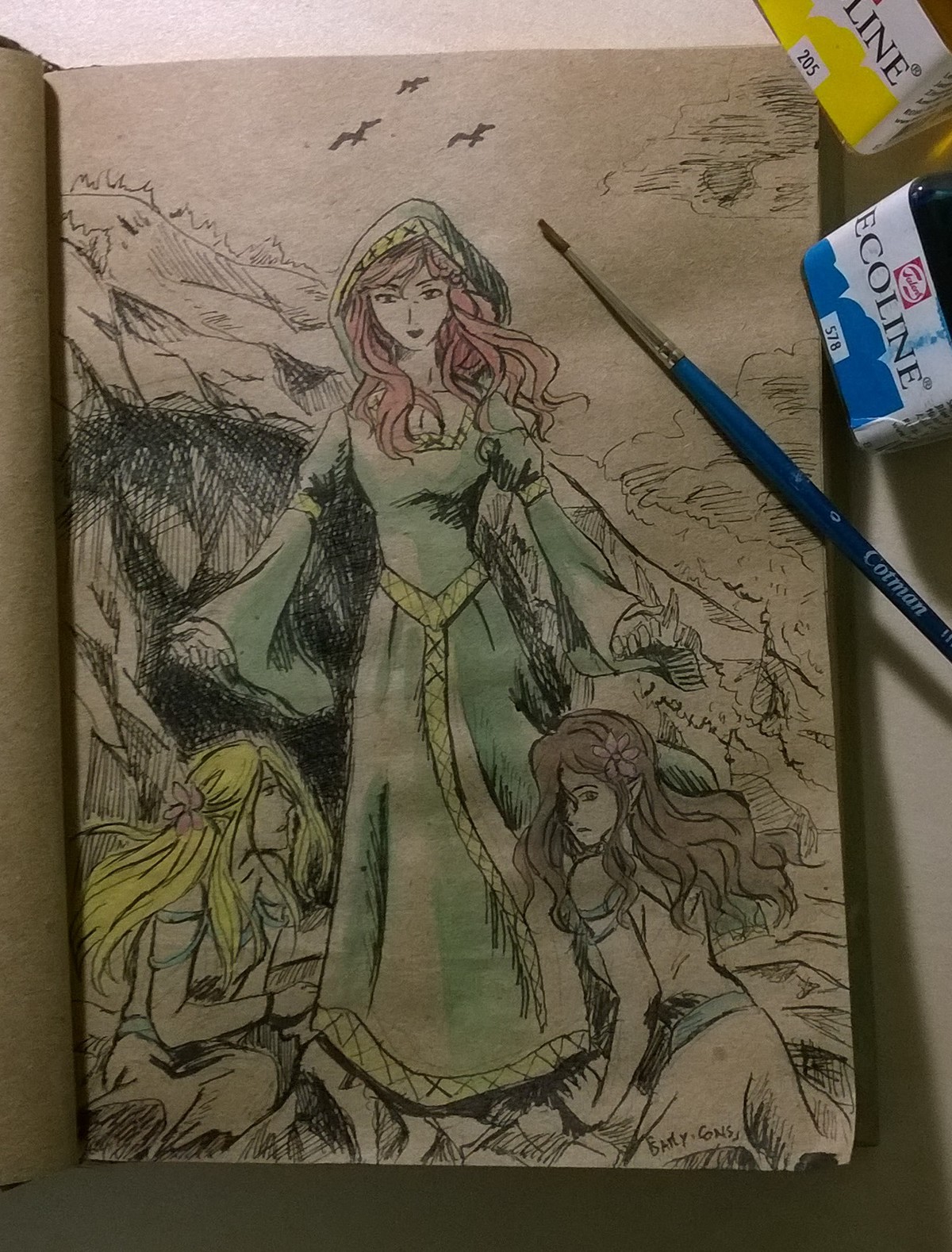
SIBILLA Appenninica / Appennine Sibyl
The Sibyl is a woman who in times past was believed to be able to make oracles. In ancient traditions there are several Sibyls in different countries, but the Appennine Sibyl has her seat in Mount Sibilla, which is named after it, a mountainous (2,173m) of the Sibillini Mountains National Park, in the Marche region, Central Italy.
Tradition wants her home to be in a cave (Grotta della Sibilla) at 2173 m. S.l.m. Currently the entry is blocked by a landslide.
For some local tradition, the Sibyl is a good fairy, beautiful, seer and enchanting, but not perky and not demonic, surrounded by beautiful fairies (sometimes with goat legs).
It is said that at night the fairies attend parties and country dances, but they have to retreat to the mountains before dawn: at the precipitous escape from one of these festivals in which they had left, the legend goes back to the Road of Fairies, a road at 2000 meters above Mount Vettore. On this occasion it is said that the Sibilla caused an earthquake that destroyed the town, for punishment.
During 1452, the Sibyl's places were interrupted to avoid the pilgrimage of witches and alchemists who went to ask for prephysics and make spells. Since forever the Sibillini Mountains were considered places inhabited by good and bad deities. The presence of caves and ancient footpaths was considered access to the realm of the outbreak, as Lake Pilato on Mount Vettore (also called the Lake of the Sibilla) where the body of Pontius Pilato is said to have ended and the water takes on the nuances of red. .
The Sibyl is a woman who in times past was believed to be able to make oracles. In ancient traditions there are several Sibyls in different countries, but the Appennine Sibyl has her seat in Mount Sibilla, which is named after it, a mountainous (2,173m) of the Sibillini Mountains National Park, in the Marche region, Central Italy.
Tradition wants her home to be in a cave (Grotta della Sibilla) at 2173 m. S.l.m. Currently the entry is blocked by a landslide.
For some local tradition, the Sibyl is a good fairy, beautiful, seer and enchanting, but not perky and not demonic, surrounded by beautiful fairies (sometimes with goat legs).
It is said that at night the fairies attend parties and country dances, but they have to retreat to the mountains before dawn: at the precipitous escape from one of these festivals in which they had left, the legend goes back to the Road of Fairies, a road at 2000 meters above Mount Vettore. On this occasion it is said that the Sibilla caused an earthquake that destroyed the town, for punishment.
During 1452, the Sibyl's places were interrupted to avoid the pilgrimage of witches and alchemists who went to ask for prephysics and make spells. Since forever the Sibillini Mountains were considered places inhabited by good and bad deities. The presence of caves and ancient footpaths was considered access to the realm of the outbreak, as Lake Pilato on Mount Vettore (also called the Lake of the Sibilla) where the body of Pontius Pilato is said to have ended and the water takes on the nuances of red. .

TUMMA'
In the city of Bari, now almost exclusively among the elders is alive the legend that explains the true origin of the thick vegetation of Ulivi in the region of Puglia (South Italy). Born in the Middle Ages under Arab domination, this story tells the adventure or the disaster of Tumma, an ancient genius of the very pronounced knot, attracted by precious treasures, one day sought for the treasure lost by the Arabs in what was then it was the arid Apulian plain.
After days of failed searches, the goblin lost in the arid plain and began to cry desperately. Only the handkerchief donated by the fairy Dusica ", also" resident "in ancient Puglia, came back to dry his eyes and with his weeping flooded the valley and then the famous olive trees were born all over the world.
It seems that in the area of the city of Bari you are still looking for treasure in the area of Tumma and if you can pick it up from your nose and steal your handkerchief you can become very rich.
The big nose (a symbol of fertility) called "Tummà u sgummà"
In the city of Bari, now almost exclusively among the elders is alive the legend that explains the true origin of the thick vegetation of Ulivi in the region of Puglia (South Italy). Born in the Middle Ages under Arab domination, this story tells the adventure or the disaster of Tumma, an ancient genius of the very pronounced knot, attracted by precious treasures, one day sought for the treasure lost by the Arabs in what was then it was the arid Apulian plain.
After days of failed searches, the goblin lost in the arid plain and began to cry desperately. Only the handkerchief donated by the fairy Dusica ", also" resident "in ancient Puglia, came back to dry his eyes and with his weeping flooded the valley and then the famous olive trees were born all over the world.
It seems that in the area of the city of Bari you are still looking for treasure in the area of Tumma and if you can pick it up from your nose and steal your handkerchief you can become very rich.
The big nose (a symbol of fertility) called "Tummà u sgummà"

LEGEND OF BIANCA OF COLLALTO
The history beginning with the struggle between the two most powerful families in the hinterland of the Republic of Venice: the Da Camino in Ceneda and the Collalto in Treviso (Veneto Region, Northeast Italy). These two families fought for centuries before reaching peace.
Peace was confirmed by the marriage of Count Tolberto of Collalto with Chiara Da Camino. Here comes into play Bianca: she was the daughter of an employee of the Collalto, perhaps an orphan, and was brought up with the children of the previous count that, so, had affection for her. Tolberto then put her at the head of Chiara's female servitude. But she seemed to have particularly jealous character, so much so that Tolberto, when he had an opportunity to leave for a war, did not seem very sorry.
On the day of departure, however, from the Collalto castle, the Count entered with his armor into the couple's room, where was Chiara. There was also Bianca here, who was combing her mistress. While the Count came out of the room, the Countess saw through the mirror that her husband greeted Bianca, who had tears in her eyes. When the Count was distant, due to jealousy the Countess imprisoned her in prisons, although Bianca said she had not had any love affair with Tolberto, she made her imprisoned alive inside a wall in a castle tower, probably in her room. Upon returning, Tolberto sent away Chiara for the gesture she had made or, according to another version, was resigned with the news that Bianca had died.
Since then, according to tradition, Bianca's ghost appears to the Collalto family when they are near joys or catastrophes: from testimonies Bianca would appear in a white dress and, in case of misfortune, with a black veil on her face.
The history beginning with the struggle between the two most powerful families in the hinterland of the Republic of Venice: the Da Camino in Ceneda and the Collalto in Treviso (Veneto Region, Northeast Italy). These two families fought for centuries before reaching peace.
Peace was confirmed by the marriage of Count Tolberto of Collalto with Chiara Da Camino. Here comes into play Bianca: she was the daughter of an employee of the Collalto, perhaps an orphan, and was brought up with the children of the previous count that, so, had affection for her. Tolberto then put her at the head of Chiara's female servitude. But she seemed to have particularly jealous character, so much so that Tolberto, when he had an opportunity to leave for a war, did not seem very sorry.
On the day of departure, however, from the Collalto castle, the Count entered with his armor into the couple's room, where was Chiara. There was also Bianca here, who was combing her mistress. While the Count came out of the room, the Countess saw through the mirror that her husband greeted Bianca, who had tears in her eyes. When the Count was distant, due to jealousy the Countess imprisoned her in prisons, although Bianca said she had not had any love affair with Tolberto, she made her imprisoned alive inside a wall in a castle tower, probably in her room. Upon returning, Tolberto sent away Chiara for the gesture she had made or, according to another version, was resigned with the news that Bianca had died.
Since then, according to tradition, Bianca's ghost appears to the Collalto family when they are near joys or catastrophes: from testimonies Bianca would appear in a white dress and, in case of misfortune, with a black veil on her face.

TATZELWURM
The Tatzelwurm is a legendary creature of Italian alpine arch but also known in Germany, Switzerland, France and Austria.
Described since the Middle Ages, it could also explain the many sightings of "dragons" that took place at that time.
Descriptions of this creature vary. Some say it's like a serpentine or amphibious reptile, others to a feline chimera, or even like a small Asian dragon. The most common description is that of a lizard with four or two sunny paws, the tail and the coat. It has a wide mouth with a long row of sharp teeth, and eyes well visible. The skin is scaly or sometimes covered with a short skirt on the back. Color also varies. There are those who also speculate on the ears.
The Tatzelwurm is also thought to be dangerously poisonous; capable of instantly killing a human with his bite, his gaze, the breath of poisonous vapors and even the acidic blood.
There have been many sightings but never a certain test, and on what was actually there are many theories: from worms and snakes to giant salamanders and proteus
The Tatzelwurm is a legendary creature of Italian alpine arch but also known in Germany, Switzerland, France and Austria.
Described since the Middle Ages, it could also explain the many sightings of "dragons" that took place at that time.
Descriptions of this creature vary. Some say it's like a serpentine or amphibious reptile, others to a feline chimera, or even like a small Asian dragon. The most common description is that of a lizard with four or two sunny paws, the tail and the coat. It has a wide mouth with a long row of sharp teeth, and eyes well visible. The skin is scaly or sometimes covered with a short skirt on the back. Color also varies. There are those who also speculate on the ears.
The Tatzelwurm is also thought to be dangerously poisonous; capable of instantly killing a human with his bite, his gaze, the breath of poisonous vapors and even the acidic blood.
There have been many sightings but never a certain test, and on what was actually there are many theories: from worms and snakes to giant salamanders and proteus
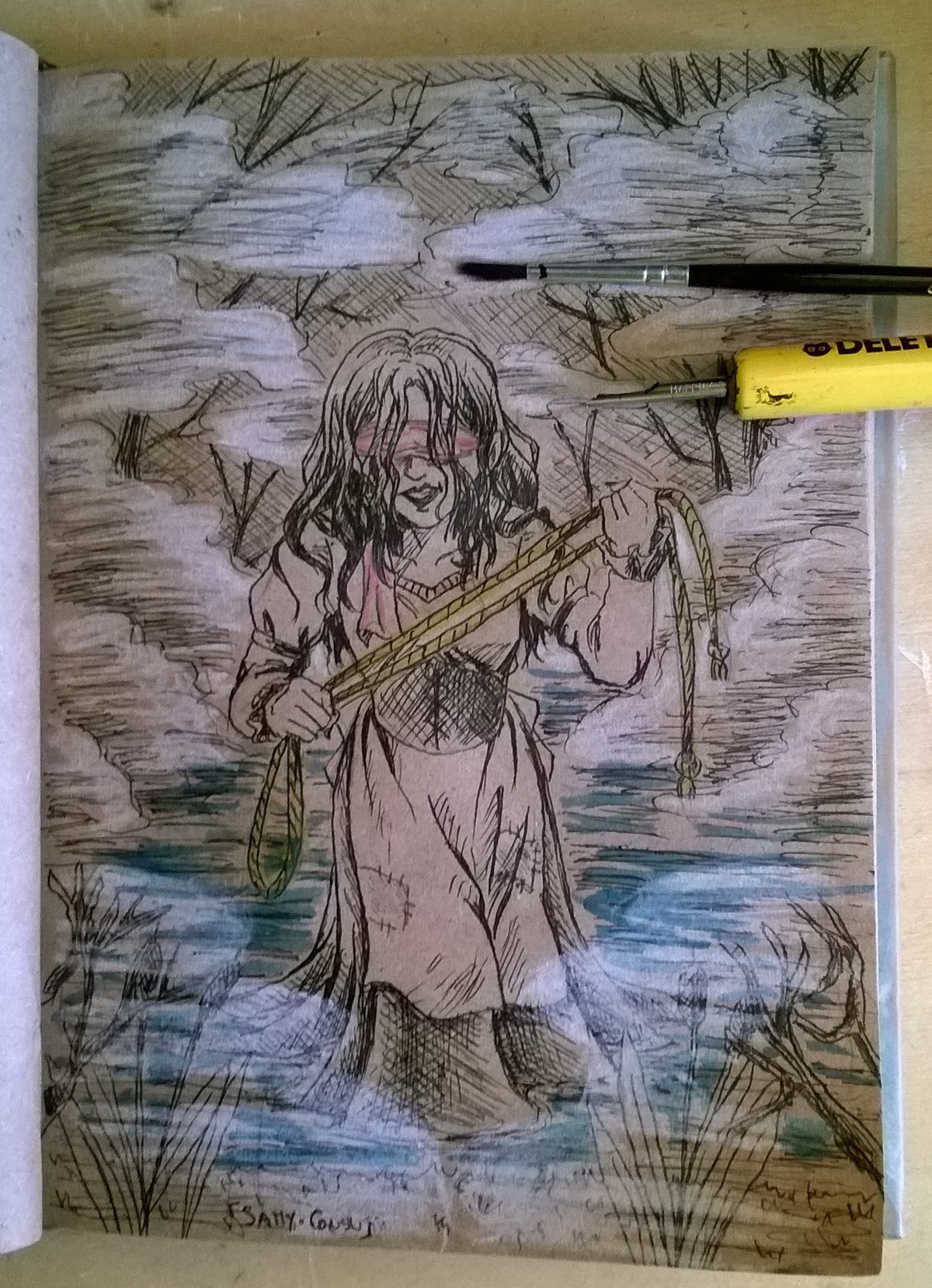
BORDA
Borda is a legendary creature that belongs to the tradition of Emilia-Romagna region and other areas of the Padana Plain, related to the Po river.
It is a kind of witch that appears, blind and horrible, both in dark hours and in misty days and kills anyone who has the misfortune to encounter her. It is the personification of fear associated with swampy areas, ponds and canals, invoked by adults to frighten children and keep them away from these dangerous places.
Some lullaby of Romagna region are dedicated to the Borda, who kills children who are not good and do not want to sleep, strangulating them with a lace or a rope.
Borda is a legendary creature that belongs to the tradition of Emilia-Romagna region and other areas of the Padana Plain, related to the Po river.
It is a kind of witch that appears, blind and horrible, both in dark hours and in misty days and kills anyone who has the misfortune to encounter her. It is the personification of fear associated with swampy areas, ponds and canals, invoked by adults to frighten children and keep them away from these dangerous places.
Some lullaby of Romagna region are dedicated to the Borda, who kills children who are not good and do not want to sleep, strangulating them with a lace or a rope.
« Lullaby, the Borda
tie the beautiful kids with a rope.
With a rope and a lanyard,
tie the beautiful children and then tighten them,
with a rope and a string,
tie the beautiful children and then kill them. »
tie the beautiful kids with a rope.
With a rope and a lanyard,
tie the beautiful children and then tighten them,
with a rope and a string,
tie the beautiful children and then kill them. »


